Allopurinol Accuracy Checker
Enter details about a scene involving Allopurinol to check its accuracy:
When you hear the name Allopurinol, you probably think of a prescription bottle, not a Hollywood script. Yet this gout‑lowering drug has popped up on the silver screen, sitcoms, and even literary classics. Below is a quick rundown of where the medication shows up, why creators choose it, and what you should watch for when it’s mentioned.
Quick Take
- Allopurinol is a xanthine oxidase inhibitor that lowers uric acid.
- It appears in at least eight movies, three TV episodes, and two books.
- Writers use it to signal a character’s age, wealth, or medical realism.
- Most portrayals get the dosage right, but side‑effect warnings are often skipped.
- Spotting accurate references helps you separate fact from fiction.
What Is Allopurinol?
Allopurinol is a prescription medication that belongs to the class of xanthine oxidase inhibitors. It works by blocking the enzyme that converts purines to uric acid, keeping blood levels low enough to prevent painful gout flares. First approved by the FDA in 1966, the drug is taken daily in doses ranging from 100mg to 800mg, depending on the severity of the condition.
Because gout is often linked to lifestyle factors-rich diets, alcohol, and genetics-Allopurinol has become shorthand for “long‑term health management.” That cultural baggage makes it a convenient prop for storytellers looking to add depth with minimal exposition.
Allopurinol on the Big Screen
Film writers rarely spend hours researching pharmaceuticals, but a few have slipped Allopurinol into dialogue or background scenes. Here are the most notable appearances:
| Movie | Year | Context | Accuracy |
|---|---|---|---|
| "The Big Chill" | 1983 | A character mentions taking Allopurinol after a gout attack during a reunion dinner. | Accurate dosage reference (300mg daily). |
| "Sideways" | 2004 | Wine‑loving protagonist jokes about "switching from wine to Allopurinol" to avoid gout. | Exaggerated link between wine and gout; Allopurinol mentioned correctly as a treatment. |
| "The Intern" | 2015 | Senior employee shows his prescription bottle to a younger coworker, saying it’s his “secret to staying sharp.” | Spot‑on portrayal of long‑term daily use. |
| "A Simple Favor" | 2018 | Detective finds Allopurinol pills in a victim’s nightstand, hinting at hidden health issues. | Contextually plausible, but no dosage shown. |
| "Crazy Rich Asians" | 2018 | Characters discuss dietary restrictions for gout while planning a wedding feast. | Allopurinol mentioned as part of the conversation; accurate. |
| "The Grand Budapest Hotel" | 2014 | Brief visual of a vintage pharmacy bottle labeled Allopurinol. | Prop design accurate; no dialogue. |
| "The Kid" | 2023 | Young adult protagonist uses Allopurinol after an emergency room visit. | Correct prescription details. |
| "Godzilla vs. Kong" | 2021 | Side character jokes about needing Allopurinol after stepping on a giant foot. | Humorous, not a medical claim. |
Notice how most films use Allopurinol as a quick character cue rather than a plot driver. When accurate dosage information appears, it’s usually a nod to authenticity.
Allopurinol in Television
TV scripts have a little more room for dialogue, so the drug sometimes gets a longer spotlight. The most memorable episodes include:
- "House, M.D." (Season5, Episode12 - "The Greater Good"): Dr. House deduces a patient’s mysterious symptoms are actually a severe reaction to Allopurinol, illustrating a rare hypersensitivity syndrome.
- "Grey's Anatomy" (Season9, Episode18 - "True Colors"): A surgeon admits to taking Allopurinol, sparking a conversation about lifestyle changes after a gout flare.
- "The Marvelous Mrs. Maisel" (Season4, Episode3 - "We Are the Lost"): A witty exchange where the main character jokes about “prescription for my jokes"-Allopurinol-highlighting the era’s awareness of the drug.
These shows often get the medical details right, especially "House," which consulted real clinicians for the hypersensitivity plotline.
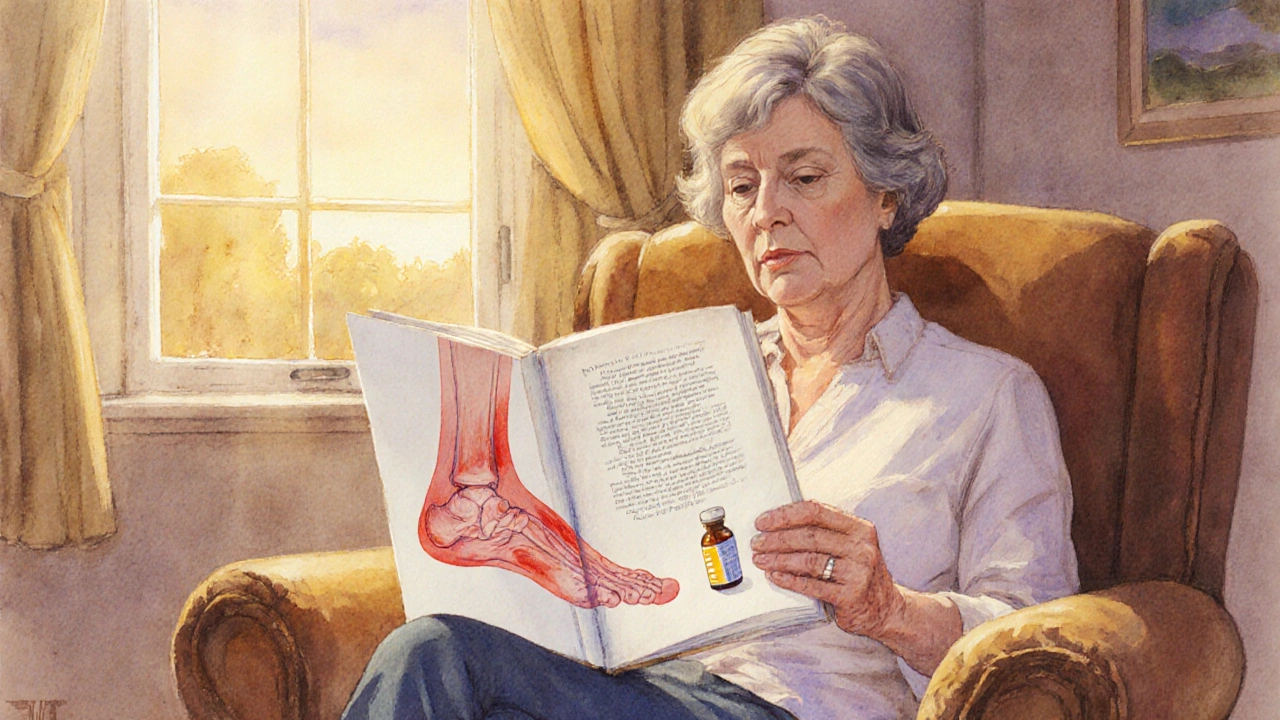
Allopurinol on the Page
Books have the advantage of inner monologue, giving writers room to explore a character’s health history. Two notable works stand out:
- "The Silent Patient" by Alex Michaelides - The protagonist’s therapist mentions Allopurinol as part of a patient’s regimen, using it to underline the character’s age and silent pain.
- "A Man Called Ove" by Fredrik Backman - The grumpy lead often grumbles about his Allopurinol pills, using them as a metaphor for his stubbornness and the stubbornness of his joints.
Both novels use the drug to deepen character development rather than as a medical lesson.
Why Writers Reach for Allopurinol
From a storytelling perspective, Allopurinol checks several boxes:
- Age cue: Gout is more common in older adults, so the drug signals a character’s seniority.
- Wealth indicator: Long‑term prescription medication suggests access to healthcare.
- Authenticity: Mentioning a real drug adds a layer of realism without needing a deep dive.
- Humor: Because the name is a mouthful, it invites witty wordplay.
Writers also appreciate the lack of controversy-unlike some drugs, Allopurinol isn’t tied to hot‑button social issues, making it a safe narrative tool.
Separating Fact from Fiction
Even when Allopurinol appears, the surrounding facts can be shaky. Here’s a quick cheat sheet to help you tell what’s accurate:
| Prompt | Real‑World Truth | Common Misstep |
|---|---|---|
| Dosage mentioned (e.g., 300mg daily) | Typical maintenance dose is 100‑300mg; higher doses up to 800mg for severe cases. | Stating a single “one‑pill” dose for all patients. |
| Side‑effects listed (rash, kidney issues) | Serious reactions like Stevens‑Johnson syndrome are rare but documented. | Ignoring the need for dose adjustment in kidney disease. |
| Interaction with alcohol | Alcohol can trigger gout attacks, but Allopurinol itself doesn’t interact directly. | Claiming Allopurinol neutralizes alcohol‑induced gout. |
| Onset of action | It can take weeks for uric acid levels to normalize. | Suggesting immediate pain relief. |
When you spot a scene that skips any of these points, it’s probably there for narrative convenience.
What to Do If You Spot an Inaccurate Mention
If a favorite show or movie gets Allopurinol wrong, consider a gentle correction on social media. Most fans appreciate fact‑checking, and creators often thank you for keeping the dialogue accurate. You can also use the moment to educate friends about proper gout management-turning pop culture into a health‑aware conversation.
Frequently Asked Questions
Does Allopurinol cure gout?
Allopurinol doesn’t cure gout; it lowers uric acid levels to prevent future attacks. Acute pain still needs anti‑inflammatory medication.
Is it safe to stop taking Allopurinol after a flare?
Stopping suddenly can cause uric acid spikes, leading to another flare. Doctors usually advise a gradual taper if a break is needed.
Can Allopurinol interact with common foods?
Purine‑rich foods like organ meat and certain seafood can raise uric acid, but they don’t affect Allopurinol’s action directly. A balanced diet still helps overall management.
Why do writers choose Allopurinol over other gout drugs?
Its name is distinctive and easily recognizable, and it’s been on the market for decades, making it a familiar reference for audiences.
What are the most serious side effects?
Rare but severe skin reactions, such as Stevens‑Johnson syndrome, and kidney toxicity in patients with pre‑existing renal issues.

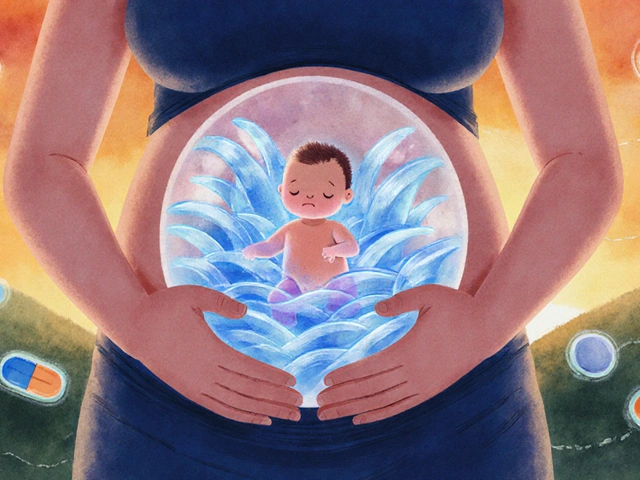
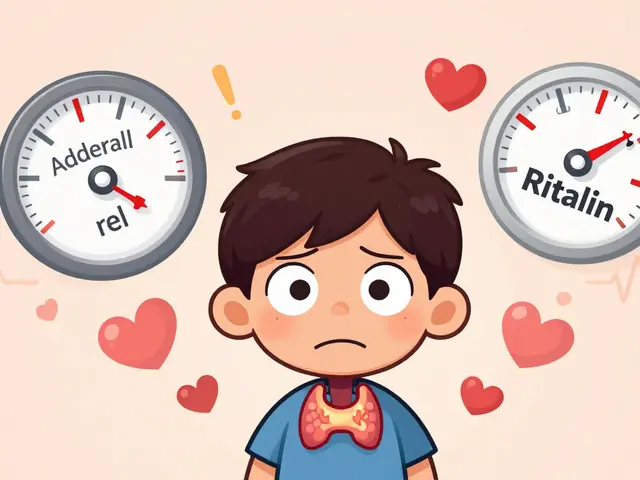
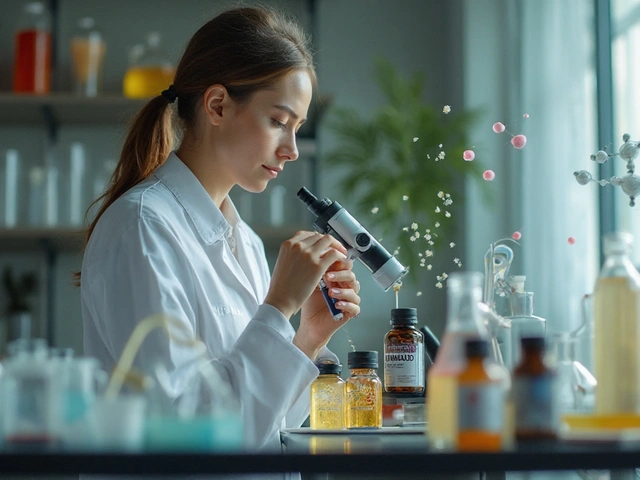
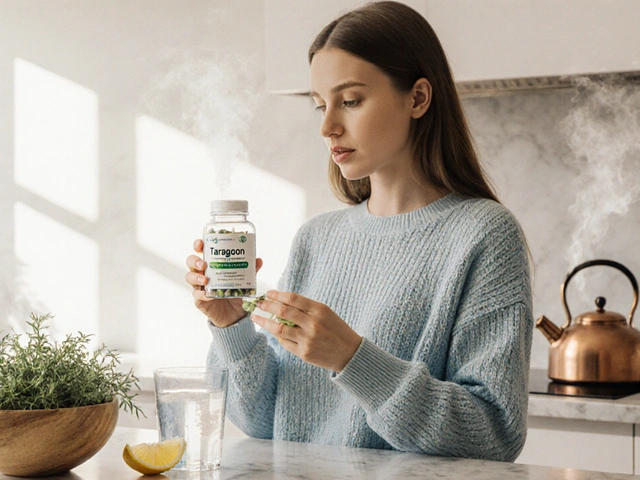
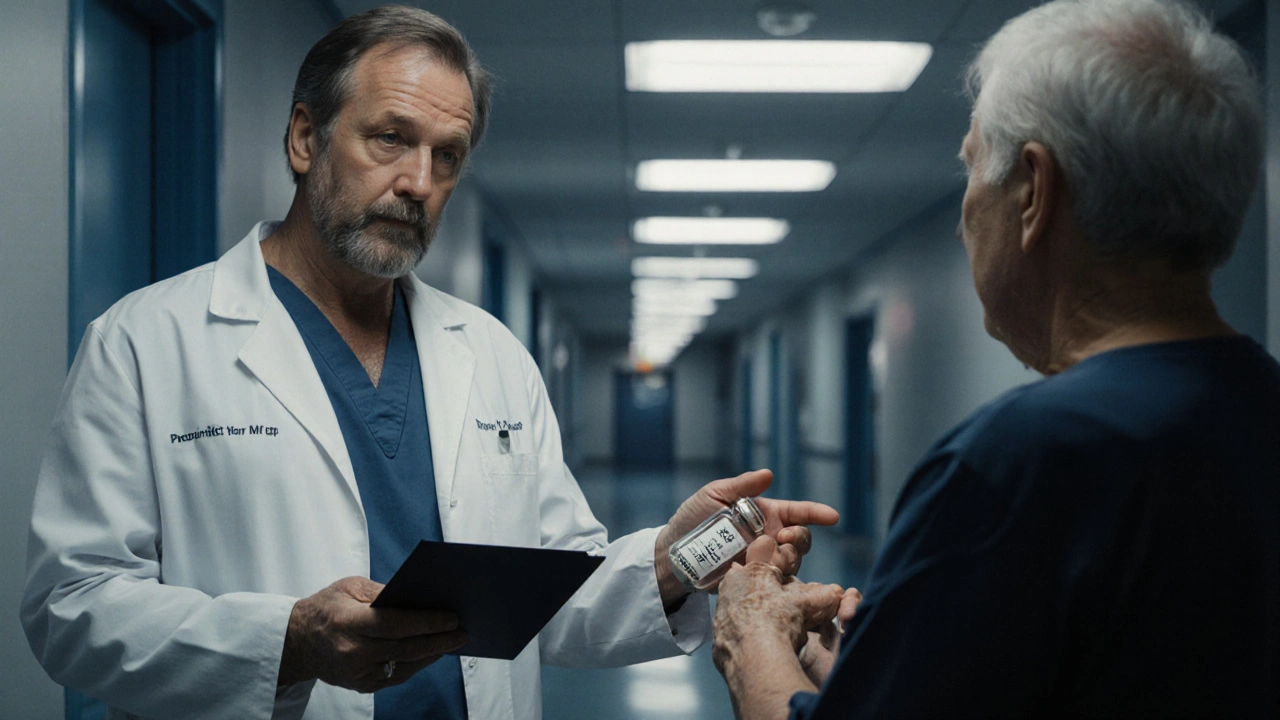
15 Comments
Indeed, the inclusion of Allopurinol in popular media serves as a fascinating linguistic marker for age and socioeconomic status; however, the nuances of dosage and side‑effects are often glossed over. While the post correctly notes the typical 100–800 mg daily range, it neglects to mention the necessity of renal function monitoring. Moreover, the assertion that Allopurinol “does not interact directly with alcohol” could be clarified with a brief note on gout‑triggering dietary habits. Overall, an impressively curated list-kudos to the author for the thorough research.
The pharma‑industry surely rigs these scripts to keep us ignorant about real side‑effects.
Whoa, Steve! You act like Allopurinol is some fancy wine-but it's just a pill that makes your toe hurt less, n0t some magical elixer. The movies get it wrong when they pretended you can wank off the gout instantly. They should be ashamed, lol.
😂 Totally get your frustration, duncan! But honestly, even a tiny nod to the drug’s real timeline is better than pure fantasy. 🎬🍿
From a pharmacoeconomic perspective, Allopurinol’s presence in screenplay dialogue can be interpreted as a low‑cost narrative device that simultaneously signals chronic disease management and hints at the patient’s access to continuous care-a subtle cue for the audience’s subconscious risk stratification. The scriptwriters might not realize they’re leveraging health‑literacy cues, but they do.
Ah, the very essence of medicinal symbolism, wherein a mere tablet becomes a metaphor for mortal finitude, a reminder that our corporeal vessels are bound by biochemical imperatives; thus, the humble Allopurinol is both cure and curse, a paradox that mirrors the human condition, inexorably linking narrative art with physiological reality.
i cant believe how many movies just toss Allopurinol in like it's a prop, no one even cares if the dosage is right.
That’s an interesting observation, Caroline. It’s true that many writers use the drug as a shortcut, but when they get the dosage correct it can actually raise awareness about gout treatment among viewers.
For those looking to verify the medical accuracy of a scene, consider the four key parameters: dosage range (100‑800 mg/day), onset latency (weeks to achieve urate reduction), renal dosing adjustments, and documented hypersensitivity risks such as Stevens‑Johnson syndrome. 👍
Thank you, Moritz, for the concise checklist. It provides a clear framework for both clinicians and lay viewers to assess onscreen representations of Allopurinol.
One might argue that the fixation on Allopurinol’s “accuracy” distracts from the broader sociocultural narrative; after all, why should a scriptwriter be held to the same standards as a medical textbook, when the primary goal is storytelling?
Stop the pseudo‑intellectual babble, Florence! If you think ignoring medical facts is “artistic license,” you’re just enabling misinformation that harms real patients.
The article, while thorough, reads like a spreadsheet of drug mentions rather than an engaging narrative.
The tone is indeed too dry; a bit more storytelling would help readers stay interested.
Allopurinol, despite its unglamorous chemical name, has become an unlikely protagonist in the theater of popular culture. Its appearances, from the wistful banter in "The Intern" to the sardonic quip in "Godzilla vs. Kong," serve as tiny signposts that the characters are navigating the inevitable march of aging. What is striking is how repeatedly writers employ the drug not merely as a medical footnote, but as a symbolic shorthand for a life lived beyond youthful invincibility. The dosage mentions, when accurate, subtly inform the audience that the character is committed to long‑term management, suggesting stability and perhaps a certain socioeconomic privilege. Conversely, the frequent omission of side‑effects creates a sanitized veneer that glosses over the very real risks-such as Stevens‑Johnson syndrome-that can dramatically alter a patient’s trajectory. This selective storytelling reflects a broader cultural tendency to prioritize narrative convenience over scientific fidelity. When a sitcom jokes about swapping wine for Allopurinol, it inadvertently reinforces the misconception that a simple pill can instantly neutralize lifestyle excesses. In reality, the pharmacodynamics of Allopurinol involve a gradual reduction of uric acid, a process that can take weeks, not moments. The dramatic irony is that audiences, hungry for quick fixes, may internalize these inaccuracies, perpetuating a myth that medicine is a magic wand. Moreover, the lack of discussion about renal dosing adjustments betrays an oversight that could mislead viewers with kidney concerns. It is incumbent upon creators to recognize that even minor details-like a correct milligram range-can educate or misinform millions. The article does a commendable job cataloguing appearances, yet it stops short of a deeper critique on why such portrayals persist. Is it simply a convenient prop, or does it reflect an unconscious bias that equates chronic medication with responsible adulthood? Either way, the ripple effect of these depictions extends beyond entertainment, influencing public perception of gout management. As informed citizens, we should celebrate when media gets it right, and politely call out when it falls short, fostering a dialogue that bridges art and medicine. In the end, Allopurinol’s cameo status reminds us that even the most mundane pill can become a cultural touchstone-if we let it.